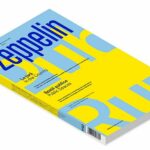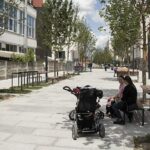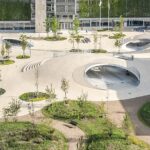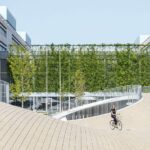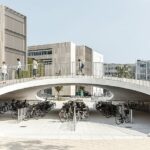Intro: Ștefan Ghenciulescu
This short dossier starts in fact before the introduction you are just reading. The opinion piece on rural space and the recent works of the Larix Studio closes the dossier on village architecture; it also includes a public space project, one of the most persecuted programs in a rural world that has to deal with underfunding, migration and abandonment, but also with individual interests and poor civic association.
Unsurprisingly, the Romanian city deals with similar issues: public space is the hunting ground where we all clash together, a shapeless mass from which morsels are grabbed or abandoned. To this we add a type of urbanism that works mainly for individual private interests or for the pride and delusional fantasies of the city mayors, and what we get is the harsh reality of the Romanian cities.
A seemingly modest project, easy-going but sensitive, such as the street transformed by Planwerk in Cluj, is for the time being an exception that we believe should become an urgent model of good practice.
We also have two international examples, with an important theme and an equally relevant interpretation: a bicycle parking becomes an opportunity for a completely accessible artificial urban terrain in Copenhagen. The operation in Vilnius refers to a type of project that isn’t a frequent presence in Zeppelin: a large shopping centre on the outskirts of the city. However, we included it for the effort of having obtained public space from a private place, for the injection of contemporary art and the humanization of a space that will be part of the city for a long time, and, consequently, should not be ignored.


